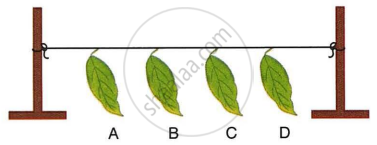Advertisements
Advertisements
Question
Solution
The opening and closing of stomata depend upon the changes in the turgidity of their guard cells. Due to the absorption of water, the guard cells become turgid. Their inner walls are pulled apart by their outer wall. The gap between the guard cells becomes wider and stomata open. When guard cells are flaccid due to loss of water, the outer walls are not stretched, their inner walls are not pulled apart decreasing the gap between the guard cells and stomata close.

APPEARS IN
RELATED QUESTIONS
Given ahead is the diagram of an experimental set up to study the process of transpiration in plants. Study the same and then answer the question that follow:

Why are glass slides placed over the dry cobalt chloride papers?
What is the advantage of wilting to a plant?
Draw a labeled diagram of the stomatal apparatus and label the following in it: Stoma, Guard cells, Chloroplast, Epidermal cells, and Cell wall.
State the Location:
Stomata
State the Location:
Guard cells
Mark the most appropriate answer in the following:
In the mechanism of opening and closing of stomata, the important factor is
Choose the Odd One Out
Name the three kinds of transpiration.
Give a reason/suitable explanation.
More transpiration occurs from the under surface of a dicot leaf.
The given figure represents an experiment:

- Leaf A was coated with grease on both surfaces.
- Leaf B was coated with grease on the lower surface.
- Leaf C was coated with grease on the upper surface.
- Leaf D was left without any application of grease. All four leaves A, B, C and D were left in a room for about 24 hours.
- Which leaf dries first? Give reason.
- Which leaf dries last? Give reason.
